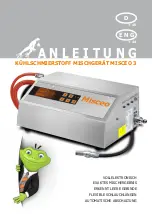
TFP621
Page 3 of 8
Operation
When exposed to heat from a fire,
upon reaching the Cover Plate/Retainer
Assembly temperature rating, the
solder binding the Cover Plate to three
tabs of the Retainer melts, allowing
the Cover Plate to separate from the
Retainer and exposing the Sprinkler/
Support Cup Assembly. The Deflector,
supported by the Guide Pins, deploys
downward into the Operated Position.
As the temperature from the fire
reaches the Sprinkler temperature
rating, the solder binding the halves of
the Solder Link Element melts, allow-
ing the element to separate. With this
linkage no longer holding the Sealing
Assembly against the sprinkler orifice,
water is allowed to flow through the
waterway, spraying from the deflector
in a pattern toward the window glazing.
Design Criteria
The TYCO Model CWS Specific Appli-
cation Concealed Pendent Vertical
Sidewall Window Sprinkler is UL and
C-UL Listed.
This sprinkler is also Listed by Under-
writers Laboratories of Canada (ULC)
as providing a two-hour equivalency
for a fire separation assembly when
acceptable to the Authority Having
Jurisdiction and installed in accor-
dance with this code.
Area of Use
When acceptable to the authority
having jurisdiction, and unless modi-
fied by a local jurisdictional standard
or code mentioned previously, the
Model CWS Window Sprinkler may be
used in either a sprinklered or unsprin-
klered building to protect non-operable
window openings that are part of a fire
separation provided:
• in an interior fire separation, the win-
dow sprinklers are installed on both
sides of the window in the fire sepa-
ration (Figure 4A-1),
• in jurisdictions where exterior spatial
separation (that is, separation from
adjacent space) is defined as pro-
tecting an adjacent building from a
fire in your building, window sprin-
klers are installed on the interior side
of the building (Figure 4A-2).
System Protection Type
Interior: Wet Systems
Glass Type
The following types and thicknesses of
glass are recognized for use with the
Model CWS Window Sprinkler:
• Non-operable, heat-strengthened,
tempered, single-glazed (single
pane), not less than 1/4 in. (6 mm)
thick;
• Non-operable, heat-strengthened,
tempered, double-glazed (double
pane or insulated), not less than
1/4 in. (6 mm) thick;
• Non-operable, UL Classified and
labeled FIRELITE PLUS CWS
ceramic glass by TECHNICAL
GLASS PRODUCTS (TGP), not less
than 5/16 in. (8 mm) thick; or,
Note:
Refer to FIRELITE PLUS CWS ceramic
glass technical data sheet for other classi-
fication limitations at www.fireglass.com.
• Non-operable, stronger glass win-
dow assemblies, not less than ¼ in.
(6 mm) thick.
Type of Window Frame/Mullion
Non-combustible Frame with a stan-
dard EPDM rubber gasket seal
Vertical joints of glass panes must be
connected by butt-joints using a sili-
cone sealant between the individual
panes or by Noncombustible Mullions.
(See Figures 4B-1 and 4B-2)
Maximum Length of
Window Assembly
Unlimited
Maximum Height of
Window Assembly
13 ft (3,96 m)
(See Figure 4B)
Maximum Distance Between
Window Sprinklers
8 ft (2,44 m)
(See Figures 4B-1 and 4B-2)
Minimum Distance Between
Window Sprinklers
6 ft (1,83 m) unless separated by a
baffle or mullion of sufficient depth to
act as a baffle.
A mullion will act as a baffle when the
mullion extends to the back of the
sprinkler deflector.
(See Figures 4B-1 and 4B-2)
Minimum Distance from
Standard Sprinklers
6 ft (1,83 m) unless separated by a
baffle
Sprinkler Location
• Mullioned Glazing Assemblies:
Locate window sprinklers within
each mullioned glazing segment.
See Figure 4B-1.
• Butt-Jointed Glazing Assem-
blies: Locate window sprinklers
on maximum 8 ft (2,44 m) centers.
See Figure 4B-2.
Maximum Distance from
Vertical Mullion
4 ft (1,22 m)
(See Figure 4B-1)
ACCEPTS 1/2" DRIVE
OR 7/8" OPEN-END
WRENCH
SUPPORT
CUP
SPRINKLER
WRENCHING
HEX
WRENCH HEX
RECESS
SPRAY
DEFLECTOR
ARROW INDICATES
SPRINKLER SPRAY
DIRECTION TOWARD
WINDOW GLAZING
WRENCH FULLY
ENGAGED ON
SPRINKLER
FIGURE 3
W-TYPE 39
SPRINKLER WRENCH


























